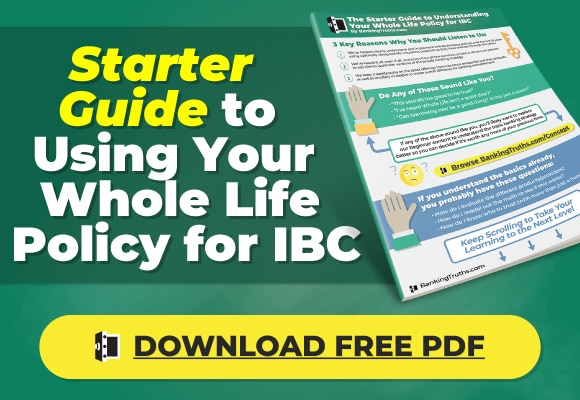The Cost Of Waiting (3-minute video)
People often delay when it comes to starting a life insurance policy, or they start with a smaller policy to get comfortable with it. What they don’t realize is how much future income they’re costing themselves by waiting. See the time value of money effect in this 3-minute video.
Hi, this is Hutch with BankingTruths.com. And today I’m going to illustrate the cost of waiting using this nifty software. Normally clients take a while to get comfortable with the idea of using permanent life insurance for wealth building. And even once they do, it’s still new, it’s still scary. And it’s something that they just want to dip their toes into, or maybe they’re just not ready yet for whatever reason, whether they’re going to start a smaller policy and really dumping in later or whatever it is.
And there’s a cost of waiting involved and it has to do with the time value. So we’re all born with just one compound interest curve and the longer it takes to get that curve off the ground, uh, the worst it’s going to be in the future. So what this illustration is showing is two policies. They’re actually identical policies in terms of premiums.
So it’s 150,000 of cumulative premium. As you can see here, and we’re using a five pay, so we’re trying to fit as much money as we can into the minimum non-mec death benefit, as soon as we can. So you can see 30, 69. Uh, 1 21 50 and then five years later, after the fifth year, this person is going to go 30, 60, 91, 21 50, and the green policy, since they’re older, they even have less death benefit.
As we can see when we click the non guaranteed death benefits. So they’re waiting five years and because they’re older, we don’t need to wrap as much death benefit around the same amount of pre. But what’s staggering is when we look at the non-guaranteed surrender value, you can see just by waiting this five years to put it into the exact same policy design, just waiting five years later and putting in wrapping less death benefit around it.
This green line doesn’t have enough runway before age 65 and before, uh, income starts to really produce a meaningful number. It’s 363,000, but it happens to be $173,000 less than if they just started the exact same policy with more death benefit five years earlier. And so the blue line has more guaranteed surrender value along the way.
Remember even if they planned to only use us for retirement income, they do have access to this along the way, and they have a bigger number to pull from. And if we see what that equates to by clicking the cumulative. We can see that in the first year, since it’s a much bigger number to pull from. The person that started younger can take $53,000 of tax exempt income versus just under $35,000.
Remember, same policy, less death benefit. In fact, now, if we add that up over 20 years and we get out to see the cumulative income number, the blue line gets to take over a million dollars. Whereas the green line takes less than a million dollars, all the same assumptions, same policy chassis, just getting money in sooner is better.


